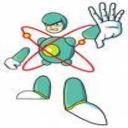Yahoo Answers is shutting down on May 4th, 2021 (Eastern Time) and beginning April 20th, 2021 (Eastern Time) the Yahoo Answers website will be in read-only mode. There will be no changes to other Yahoo properties or services, or your Yahoo account. You can find more information about the Yahoo Answers shutdown and how to download your data on this help page.
Trending News
i need help with some physics questions and my coursework is due in tomorrow. can anyone help?
1) a car hauls a trailer at a constant velocity of 100km/h when exerting a steady pull of 500N.
a) whats the work done in 20 mins
b) the power required
2)Calculate the work done and the power dissipated in a moving body along a horizontal surface 15 metres at a constant velocity, When the only applied force is equal to the weight of the body the movement lasts 10 seconds and the mass of the body is 20 kilograms
3) Calculate the work done and the power dissipated for a mass of weight 500n to be horizontally moved at a constant velocity for 160 metres when the whole movement lasts 20 seconds.
2 Answers
- NCSLv 75 years agoFavorite Answer
1) 100km/h * 1m/s / 3.6km/h = 27.8 m/s
a) work = F * d = F * (v * t) = 500N * (27.8m/s * 20*60s) = 1.67e7 J = 16.7 MJ
b) power = F * v = 500N * 27.8m/s = 13 900 W = 13.9 kW
2) If applied force = weight, then the acceleration = g.
To be dissipated over 10 seconds at this rate, the initial velocity must have been
v = g*t = 9.8m/s² * 10s = 98 m/s
so the initial KE = ½mv² = ½ * 20kg * (98m/s)² = 96 000 J
which is equal to the work done, and the power
P = work / time = 96000J / 10s = 9600 W = 9.6 kW
3) Depends on the friction force.
If you find this helpful, please award Best Answer!
- electron1Lv 75 years ago
Since the car and trailer are moving at a constant velocity, the net force is 0 N. This means the applied force is equal to the friction force. To the work, we need to determine the distance they move in minutes. Let’s convert the velocity to meters per minute.
v = 100,000 ÷ 60 = 1,666⅔
To determine the distance, multiply by 20 minutes.
d = 20 * 1,666⅔ = 33,333⅓ meters
Work = Force * distance
Work = 500 * 33,333⅓ = 16,666,666⅔ N * m
Power = Work ÷ time in second
t = 20 * 60 = 1200 seconds.
Power = 16,666,666⅔ ÷ 1200
The power is approximately 138,889 watts.
2)Calculate the work done and the power dissipated in a moving body along a horizontal surface 15 metres at a constant velocity, When the only applied force is equal to the weight of the body the movement lasts 10 seconds and the mass of the body is 20 kilograms
This is similar to the problem above. “When a object is moving on a horizontal surface at a constant velocity, the applied force is equal to the friction force”.
Force = 20 * 9.8 = 196 N
Work = 196 * 15 = 2940 N * m
Power = 2940 ÷ 10 = 294 watts
3) Calculate the work done and the power dissipated for a mass of weight 500n to be horizontally moved at a constant velocity for 160 metres when the whole movement lasts 20 seconds.
This is similar to the problem above.
W = F * d
P = W ÷ t
I hope this helps you to understand how to solve these types of problems



